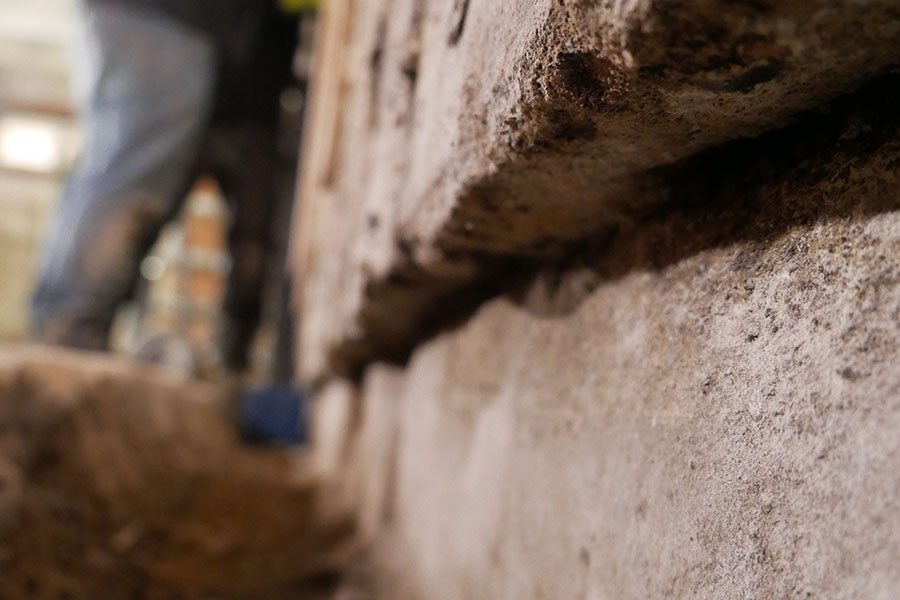Whether you are selling or buying, we want to say, “Congratulations!” Moving homes is a huge milestone that comes with many rewards… and stresses. And now your home inspector just added another stress—they told you there is a crack in your foundation. The first though that crosses your mind is probably, “How much it this going to cost to fix?” The answer ranges from $0 to thousands. Why? Because not all foundation cracks are cause for concern.
What Kind of Crack Are We Dealing With?
All foundations eventually crack in one way or another. The trick is to know which foundation cracks are actually a warning sign of a problem. Generally speaking, there are three common types of foundation cracks your home inspector will see:
Shrinkage Cracks
If your home inspector finds this, congratulations—this is of little to no concern. They are common in poured concrete foundations. Shrinkage cracks are often seen as vertical lines that occur in the middle of the wall area. They occur because when concrete slowly cures and hardens, it shrinks causing small hairline cracks. There is no need to be concerned unless you see them grow over time, they are wider than 1/8th of an inch, if they grow wider from the bottom to the top, or if they continue into the brickwork or masonry above the foundation wall.
Settlement Cracks
These cracks can be vertical near the edges of the foundation walls, or seen as a diagonal “staircase” crack in concrete block foundations. Often, these cracks are a one-time occurrence as a result of the foundation settling and do not grow over time. There is cause for concern if you see the gap grow wider over time, or if the cracks of the staircase no longer line up horizontally. These can be signs of ongoing settlement, which means there is a problem with your footings. The footings are what the foundation sits upon. Unfortunately, footing repairs can be quite expensive.
Horizontal Cracks
Horizontal cracks are a huge red flag for your foundation. If you have a horizontal crack, it is usually caused by excess pressure being exerted on the wall from the exterior, pushing it to bow inward. You may see some blocks pushed outward further than others, or the entire wall may be curving inward. They are often a sign of water drainage problems or excessive weight on the exterior of the wall. These cracks should be diagnosed and fixed right away. Horizontal cracks tend to grow bigger over time, along with the cost to repair the damage they cause.
What Should I Do If the Crack is Cause for Concern?
Foundation cracks are only a symptom of a problem your home has. It is important to identify and fix the issue at its source. Often times, the cracks can be hidden either behind drywall, insulation, or the ground outside. It is not until a larger problem occurs, like mould or leaks that they finally become visible. Hiring a professional to assess your home is the best option for thoroughness and ease of mind. Whether the issue is improper yard grading, faulty downspouts, tree roots, or more, a professional will help you identify and solve the problem (and hopefully for the right price!)

